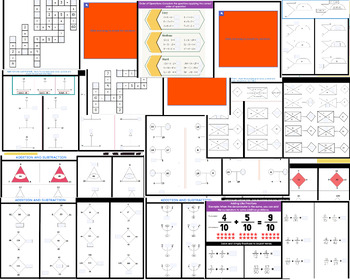Quantitative Reasoning Workbook
- PDF
- Easel Activity
Description
Unlock the Magical World of Numbers!
Introducing our specially crafted Quantitative Reasoning workbook, designed to ignite a passion for mathematics in young minds and pave the way for a solid understanding of mathematical concepts!
Join us on a journey to master basic math operations such as Addition, Subtraction, Multiplication, and Division. With each page, we'll explore fascinating numerical concepts!
Our workbook is structured meticulously to eliminate fears, improve mental calculation abilities, and instill confidence right from the beginning of their educational journey.
From simple concepts to more advanced challenges, our topics are carefully arranged for seamless progression. We provide clear examples and step-by-step guidance to demystify even the trickiest of mathematical puzzles!
Flexible Learning, Anywhere, Anytime: Whether you prefer printable PDFs or interactive digital activities, our workbook offers the flexibility to cater to your child's learning style. With ready-to-use interactive activities accessible on any device, learning becomes engaging, convenient, and fun!
By joining us on this mathematical adventure, pupils will:
Develop a strong numerical foundation, fostering a lifelong proficiency in mathematics.
Cultivate a genuine love for the enchanting world of numbers, turning every calculation into a joyful exploration!
Expand their cognitive abilities, sharpening critical thinking and reasoning skills that are essential for success in future endeavors.
Equip themselves with the confidence and competence needed to conquer any mathematical challenge that comes their way!
Empowering Educators
Our workbook isn't just a tool for students – it's a valuable resource for educators too!
With meticulously structured lessons and comprehensive examples, teaching quantitative reasoning becomes a breeze.
Fuel your classroom with engaging activities that inspire a love for mathematics and foster a supportive learning environment for every student.
Experience the Difference: Join countless parents and teachers who have witnessed the transformative power of our workbook. Watch as your child's confidence soars, their love for mathematics ignites, and their potential for success reaches new heights!
Let's embark on this exhilarating journey together, where learning meets fun, and numbers become our greatest allies!
Are you ready to unlock the door to limitless possibilities?
Dive into our Quantitative Reasoning workbook today and watch your pupil's mathematical prowess soar to new heights!






